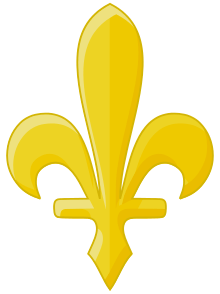Bosniaks of Montenegro
|
| |
| Total population | |
|---|---|
| 53,605[1] | |
| Regions with significant populations | |
| Sandžak | |
| Languages | |
| Bosnian, Montenegrin | |
| Religion | |
| Sunni Islam | |
| Related ethnic groups | |
| Other Slavic peoples, especially South Slavs |
Bosniaks are an ethnic group in Montenegro, first introduced in the 2003 census for political reasons. According to the last census from 2011, the total number of Bosniaks in Montenegro was 53,605 and they comprised 8.65% of population. Bosniaks are the third largest ethnic group in the country, after Montenegrins and Serbs.
Demographics


| Part of a series of articles on
|
| Bosniaks
|
|---|
.svg.png) |
|
Recognized |
|
Kinship · Architecture · Cultural Heritage Sites · Literature · Music (Sevdalinka) · Art · Cinema Cuisine · Sport |
Bosniaks primarily live in northern Montenegro, in the area called Sandžak and they form the majority of the population in two municipalities: Rožaje (83.91%) and Plav (51.90%).
History
Bosniaks largely trace their origin to voluntary or forced conversion from Serbian Orthodox Christianity in the centuries after the Ottoman invasion of Serbia in 14th and 15h centuries.[2] This is also evidenced by the colloquial term Poturica, used by other ethnic groups in the Balkans.[3] The term Bosniak was first used in Montenegro at the 2003 census, prior to this the term Moslem was used.[4]
Two thirds of Sandžak Bosniaks trace their ancestry to the regions of Montenegro proper, which they started departing first in 1687, after Turkey lost Boka Kotorska. The trend continued in Old Montenegro after 1711 with the extermination of converts to Islam ("istraga poturica"). Another contributing factor that spurred migration to Sandžak from the Old Montenegro was the fact that the old Orthodox population of Sandžak moved towards Serbia and Habsburg Monarchy (Vojvodina) in two waves, first after 1687, and then, after 1740, basically leaving Sandžak depopulated. The advance of increasingly stronger ethnic Montenegrins caused additional resettlements out of Montenegro proper in 1858 and 1878, when, upon the Treaty of Berlin, Montenegro was recognized as an independent state. While only 20 Bosniak families remained in Nikšić after 1878, the towns like Kolašin, Spuž, Grahovo, and others, completely lost their Bosniak population. The clan-organized Montenegrin army forcibly converted about 12,000 Bosniaks and Albanians to Christianity from the areas of Southern Sandžak, and Metohija, in 1912, upon capturing those lands from the Turks in the Balkan Wars. Practically all of the converts, less a couple of families, converted back to Islam in 1913, when, under international pressure, the public announcement was made giving them freedom to profess the faith of their choosing. The last major interethnic incident occurred in 1924 in Šahovići and Pavino Polje (present day municipality of Bijelo Polje in Sandžak), when Montenegrin peasants massacred hundreds of Bosniaks, under the pretext that Bosniak outlaws murdered a local Montenegrin hero, presumably under false pretense.
The last segment of Sandžak Bosniaks arrived from several other places. There was a continuous intermingling with the members of the local Turkish administration and military. Some of Bosniaks came from Slavonia after 1687, when Turkey lost all the lands north of Sava in the Austro-Turkish war. Many more came from Herzegovina in the post-1876 period, after the Herzegovina Rebellion staged by the Serbs against Austro-Hungary and their Muslim subjects. Another wave followed immediately thereafter from both Bosnia and Herzegovina, as the Treaty of Berlin placed the Vilayet of Bosnia under the effective control of Austria-Hungary in 1878. The last wave from Bosnia followed in 1908, when Austria-Hungary officially annexed Bosnia, thereby cutting off all direct ties of Bosnian Muslims to the Sublime Porte, their effective protector. Today, Bosniaks are a large minority in Montenegro, with over 50,000 Bosniaks living in Montenegro.
Politics
The main political party of Bosniaks is the Bosniak Party of Montenegro (BS), led by Rafet Husović. The party currently has three seats in Parliament.
Most of the Bosniaks in Montenegro were in favor of Montenegrin independence when the independence referendum was held in 2006.
Religion
Today, the majority of Bosniaks are predominantly Sunni Muslim and adhere to the Hanafi school of thought, or law, the largest and oldest school of Islamic law in jurisprudence within Sunni Islam.
Notable people
- Danijel Alibabić, singer
- Selmo Cikotić, Bosnian politician
- Mirsad Huseinovic, former footballer in the U.S.
- Halil Kanacević, basketball player born in the U.S. to Montenegrin Bosniak parents. He holds a Montenegrin passport and he is eligible to play for the national team.
- Hafiz Abdurahman Kujević, religious leader
- Majda Mehmedović, handball player
- Fuad Muzurović, former Bosnian footballer
- Dado Polumenta, singer
- Šako Polumenta, singer
- Dženan Radončić, footballer
- Fahrudin Radončić, Bosnian politician
- Demir Ramović, footballer
- Refik Šabanadžović, former footballer
- Sead Šehović, basketball player
- Suad Šehović, basketball player
- Ermin Seratlić, footballer
- Elsad Zverotić, footballer
See also
References
- ↑ Montenegro#Demographics
- ↑ http://www.rastko.rs/kosovo/istorija/vasiljevic_muslimani_c.html
- ↑ sh:Poturica
- ↑ Montenegro#Demographics
External links
| ||||||||||||||||||||
| ||||||||||
